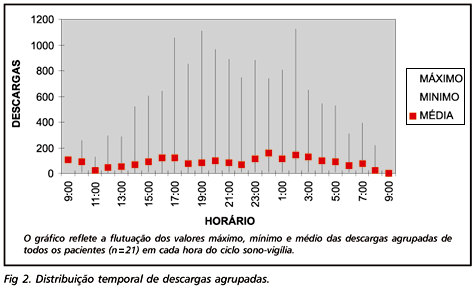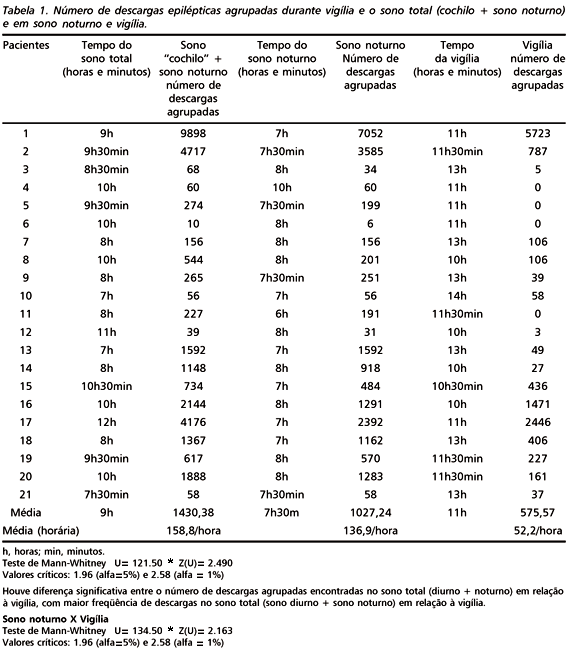The objective of our study was, by means of continuous prolonged ambulatory electroencephalographic monitoring, to analyze the temporal distribution of paroxysmal discharges during sleep and awake in children and adolescents with refractory epilepsies. Twenty-one patients in the 4-to-17 year age bracket with refractory epilepsies, with 52.3% (n=11) male and 47.6% (n=10) female from the Discipline of Neurology of the Universidade Federal de São Paulo (Federal University of São Paulo). Cerebral Holter was carried out with Bioware EEG-2008 of prolonged ambulatory electroencephalographic monitoring equipment. We observed greater frequency of isolated and grouped epileptic discharges in day and in night sleep in relation to awake; day and night sleep led to activation of epileptic discharges, both isolated and grouped. The cerebral Holter was more effective in detecting epileptiform discharges than the routine EEG in 33.33% of the patients. The cerebral Holter proved a useful and precise method in detecting epileptic discharges, as an aid in the assessment of the fluctuations in frequency of paroxysmal activity in children with refractory epilepsies, both in relation to activities in daily life, and to the relation to the biological cycle of sleep and awake.
epilepsy; eletroencephalographic; child; adolescence






